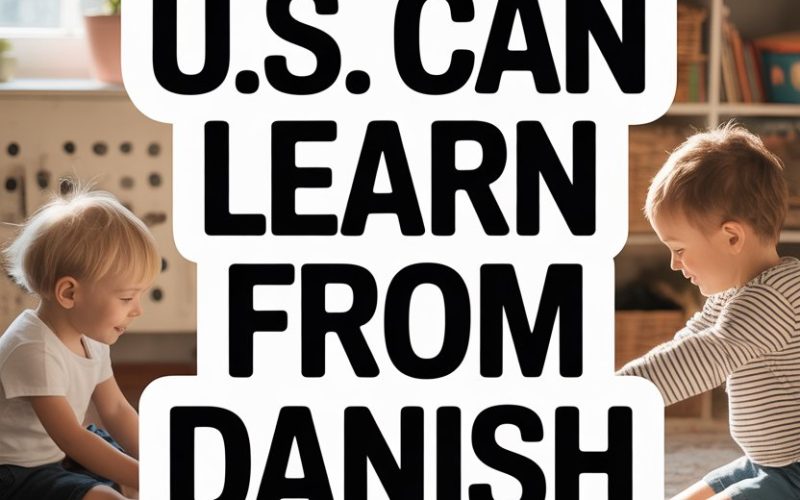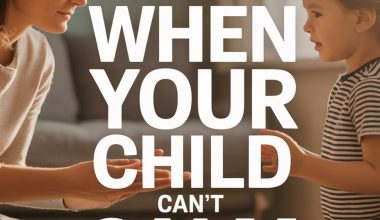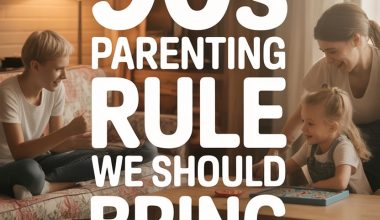Blink and you’ll miss them: Danish kids in rain suits, splashing through puddles, grinning like they’ve just discovered chocolate grows on trees.
Meanwhile, American parents huddle by playground fences, nervously eyeing both mud and the clock. There’s a reason Danish children keep topping global rankings for happiness, and it’s not just the abundance of cinnamon rolls.
Hygge Is Not Just a Pinterest Board
Once in a while, a word comes along that’s so good you want to knit it onto a cushion. Enter hygge (say it with me: HOO-gah).
Sure, Americans know it as the buzzword for twinkly fairy lights and mugs of cocoa, but in Denmark, hygge is a way of life—especially for families.
On rainy afternoons, Danes lean into cozy togetherness. This doesn’t mean orchestrating the perfect Instagram moment.
Danish parents invite mess, laughter, and relaxed conversation, letting kids help stir the batter or rearrange furniture into a pillow fort. The focus isn’t on perfection or productivity, but on connection and comfort.
It’s the antidote to the achievement hamster wheel, and the science is clear: children raised in warm, emotionally available environments develop better resilience and happiness. That’s not just hygge—that’s psychology at work.
Outdoor Play Is Mandatory (Even When It’s Freezing)
American parents, meet the concept of “there’s no bad weather, only bad clothing.” In Denmark, if kids aren’t outside, someone probably lost a bet.
Daycares routinely whisk even babies outdoors to nap under the sky, bundled up like miniature astronauts. Schoolchildren splash through rain and snow, their cheeks glowing with the kind of health you can’t buy at Whole Foods.
Research has long shown the benefits of regular outdoor play: reduced stress, better focus, improved immunity, and—here’s the kicker—happier children.
Danish parents don’t see mud as an enemy; it’s practically a rite of passage. The next time you’re tempted to cancel the playground because of a drizzle, remember that a little weather builds big character.
Parental Leave Is a Family Affair
Danish parents get a whopping 52 weeks of shared parental leave, and they actually use it. Both mums and dads (yes, dads too!) step in for baby care, setting the stage for equality at home from the very first nappy change.
This isn’t just good for the baby; it’s good for relationships, too.
American parents, faced with patchy or non-existent paid leave, are often back at work before their newborn’s first smile.
While sweeping policy change isn’t in your back pocket tonight, Danish parents offer inspiration: share the load, talk openly about needs, and champion each other’s role in the family.
Even small steps—like an evening hand-off ritual or a weekly “your turn to sleep in”—can spread the love and the sanity.
Low-Pressure Parenting Is the Name of the Game
Step into a Danish playgroup, and you’ll notice something radical: no competitive parenting. B
irthday parties are simple affairs, not Pinterest-fueled extravaganzas. There’s less “my toddler speaks Mandarin” and more “my toddler can climb a tree, sort of.”
Danish parents trust children’s natural curiosity to guide their learning. Play comes first, with formal academics taking a back seat until age six or seven.
This matches what child development experts keep shouting from the rooftops: children learn best through play, not flashcards. Take the cue—ditch the pressure, make room for open-ended exploration, and watch your child’s confidence grow.
Family Meals Are Sacred (But Not Stressful)
Dinner in Denmark isn’t about elaborate recipes or perfect manners. It’s a cherished time to reconnect, even if the meal involves reheated leftovers and a toddler who only eats beige foods.
Phones get switched off or left in another room (yes, really). Stories are swapped, jokes are told, and everyone—kids included—gets a voice.
Research shows that regular family meals build emotional closeness and positively impact children’s language, mental health, and even academic skills.
Danish parents keep things low-key and inclusive: little ones help set the table, older kids share their day, and mistakes (spilled milk, burnt toast) are met with shrugs rather than shaming. It’s the conversation that counts, not the casserole.
Trust Is the Secret Sauce
Ever heard about Danish babies napping in their prams outside cafés? It’s not urban legend—it’s trust, baked right into the culture.
Danish parents believe that kids thrive when given freedom within safe boundaries. Children walk to school alone, climb trees without constant supervision, and are expected to solve small problems on their own.
This trust doesn’t mean parents are absent; it means they’re confident their kids can handle challenges.
When American parents embrace even small doses of this approach—like letting children play unsupervised in the backyard—they’re offering a gift: self-reliance, bravery, and a deep sense of security.
Honesty and Directness Win Every Time
Forget tiptoeing around “tricky” subjects. Danish parents tell it straight, whether the topic is sex, death, or why grandma sometimes says strange things after two glasses of schnapps.
There’s a national belief that children can handle honesty, and that sheltering them from life’s realities does more harm than good.
The result? Less shame, more openness, and kids who grow into adults comfortable talking about emotions and difficult topics.
American parents can borrow this candor—age-appropriate, of course. Honest talks build trust and help kids feel respected and included.
Work-Life Balance Actually Exists
The Danes have perfected the art of leaving work at work. Offices empty out by four o’clock so parents can pick up their kids and start family time.
Overtime is frowned upon, not celebrated. “Face time” isn’t a virtue, and burnout is taken seriously.
Family time isn’t squeezed into the leftover bits of the day, but given real priority. While many American parents don’t have the luxury of a 4 PM finish, small tweaks can have a big impact.
Saying no to unnecessary commitments, scheduling “do nothing” evenings, or creating a phone-free hour before bedtime can make home feel less like Grand Central Station and more like, well, home.
Modesty: No Bragging Rights Required
You won’t catch Danish parents one-upping each other at the school gate. The Jante Law—a cultural norm that frowns on boasting—means children are raised to value teamwork and humility over personal achievement.
Group accomplishments are celebrated, and kids learn early on that kindness counts.
This mindset is linked to greater social cohesion and lower anxiety about keeping up with the Joneses (or the Jensens).
Try shifting the dinner conversation from “What did you win today?” to “How did you help someone today?” The difference is subtle, but the message is huge.
The Art of Saying Yes to Free Play
In Denmark, “go outside and play” isn’t code for “get out of my hair”—it’s a philosophy. Kids roam parks, build forts, and invent games with minimal adult interference. Structured activities, while present, are not the main event.
Research from The Atlantic highlights that unstructured play boosts creativity, cooperation, and problem-solving skills.
American parents juggling endless extracurriculars might find inspiration here: every child needs a chance to be “bored” enough to invent their own fun.
The next time your child asks for screen time, try replying with a very Danish, “Why don’t you see what you can come up with outside?”
Bumps, Bruises, and Resilience
Danish playgrounds would make an American risk manager break out in hives. Giant logs, high platforms, and boulders to scramble over—everywhere you look, risk is allowed (gasp!).
But here’s the twist: Danish parents see these bumps and bruises as essential training for life.
Learning to manage risk teaches kids self-awareness, physical limits, and resilience. It’s not about being reckless; it’s about building confidence in a safer environment, before the real world delivers bigger challenges.
You don’t have to turn your backyard into a Viking obstacle course, but you can resist the urge to swoop in at the first skinned knee.
Mental Health Is Front and Center
Copenhagen isn’t just home to happy kids; it’s a place where mental health is openly discussed. Kids learn to talk about their feelings early, and seeking help is free of stigma.
School counselors are as common as cafeteria trays.
The Danish approach doesn’t involve endless pep talks or “just be positive” platitudes. Instead, feelings—good and bad—are named, discussed, and accepted as part of being human.
American parents can take a page here: small, daily check-ins (“How are you feeling today?”) and plenty of empathy create space for children to process their emotions, big and small.
Why Not Try a Little Danish Tonight?
Adopting Danish parenting habits doesn’t require a long-haul flight or a sudden taste for pickled herring. Small shifts can ripple out, making family life a bit calmer, a bit happier, and—dare we say—more hygge.
Maybe it’s serving up a low-key family dinner with phones in another room. Maybe it’s shooing the kids outside, rain or shine, with a promise of hot chocolate when they return.
Or maybe it’s just holding back from fixing every problem, trusting your child to try (and try again).
Denmark isn’t perfect—no country is. But when the kids are this content, and the parents a little less frazzled, there’s something worth stealing.
A dash of trust, a sprinkle of play, a heap of togetherness.
Turns out “parenting like a Dane” isn’t about grand gestures. It’s about making the ordinary moments a little more extraordinary.
And yes, you get to keep your cinnamon rolls.





